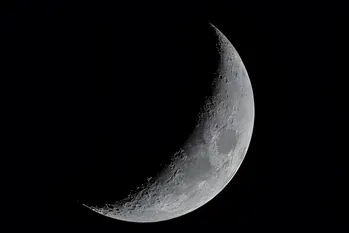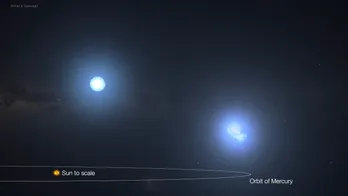Scientists have discovered an exoplanet orbiting Barnard’s star, the nearest single star to our Sun. Observations by the team also hint at the existence of three additional candidate exoplanets on various orbits around the star.
Barnard's star, located just six light-years away from us, is the second-closest star system and the closest solitary star to our Sun. Due to its proximity, it has been a primary target in the search for Earth-like exoplanets. Despite promising findings in 2018, no planet orbiting this star had been confirmed until now.
The discovery of this exoplanet is the result of observations conducted over the past five years using VLT ESO at the Paranal Observatory in Chile. "Even though it took a lot of time, we were always confident that we would find something," says Hónai González Hernández, an astronomer from Instituto de Astrofísica de Canarias (IAC) in Spain and lead author of the study.
The team searched for signals from potential exoplanets within the habitable or temperate zone of Barnard's star—the range where liquid water could exist on a planet’s surface. Red dwarfs like Barnard’s star often serve as prime targets for astronomers because smaller rocky planets are easier to detect around these less massive stars compared to larger ones, such as our Sun.
Barnard b, the newly discovered exoplanet with at least 0.34 times Earth's mass, orbits its star in a mere 20 days—closer than Mercury is to the Sun. It completes one orbit every 3.15 Earth days and has a surface temperature of about 125°C.
"Barnard b is one of the smallest known exoplanets and among only a few with masses less than that of Earth. However, the planet orbits too close to its star, closer than the habitable zone. Even though this star is approximately 2500 degrees cooler than our Sun, it’s still too hot for liquid water to exist on the surface," explains González Hernández.
For their observations, the team used ESPRESSO—a highly precise instrument designed to measure stellar oscillations caused by gravitational pull from one or more planets orbiting around it. The results of these observations were corroborated by data from other exoplanet-hunting instruments: HARPS at the La Silla ESO Observatory, HARPS-N and CARMENES. However, new data do not confirm the existence of the planet reported in 2018.
In addition to the confirmed planet, an international group also detected hints of three additional candidate exoplanets orbiting the same star. But confirming these candidates would require further observations with ESPRESSO.
"Now we need to continue observing this star to confirm other signals from the candidates," says Alejandro Suárez Mascarenas, an astronomer from IAC and co-author of the study. "The discovery of this planet, along with previous discoveries such as Proxima b and d, shows that our 'cosmic neighborhood' is full of low-mass planets."
Currently under construction, the Extremely Large Telescope (ELT) will transform exoplanet research. The ANDES ELT instrument will allow researchers to detect more of these smaller rocky planets in temperate zones around neighboring stars beyond the reach of current telescopes and enable them to study their atmospheric composition.





